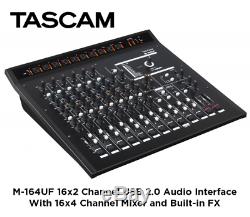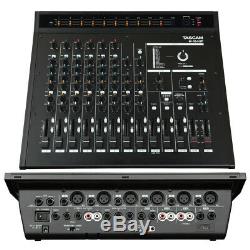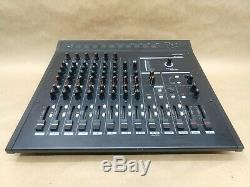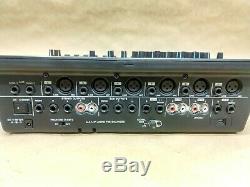
- Index
- Brand
- Antelope Audio (62)
- Apogee (127)
- Arturia (71)
- Audient (184)
- Behringer (222)
- Focusrite (1005)
- Ik Multimedia (62)
- M-audio (188)
- Mackie (61)
- Motu (204)
- Native Instruments (68)
- Presonus (244)
- Rme (185)
- Roland (109)
- Solid State Logic (37)
- Ssl (37)
- Steinberg (130)
- Tascam (157)
- Universal Audio (94)
- Zoom (65)
- ... (1551)
- Form Factor
- Item Depth
- Item Height
- Model
- 18i20 (18)
- 18i8 (21)
- Air 192 (32)
- Audiobox Usb 96 (29)
- Babyface Pro (28)
- Duet 2 (23)
- Evo 4 (23)
- Id14 (27)
- Id22 (27)
- M-track Solo (28)
- Mosc0025 (81)
- Saffire 6 (23)
- Scarlett 18i20 (27)
- Scarlett 2i2 (32)
- Scarlett 4i4 3rd Gen (42)
- Sz-ai2 (19)
- Umc204hd (26)
- Umc404hd (23)
- Us-16x08 (18)
- Vocal Studio Bundle (19)
- ... (4297)
- Type
- Analogue Mixer (6)
- Audio Interface (41)
- Audio Interfaces (54)
- Audio Mixer (24)
- Audio Visual (6)
- Audio_midi_interface (30)
- Broadcast Mixer (6)
- Compact Mixer (6)
- Digital Mixer (11)
- Digital Recorder (41)
- Dj Mixer (6)
- Electret Condenser (5)
- Interface (7)
- Interfaces (22)
- Keyboard Synthesizer (5)
- Live Mixer (8)
- Midi Interface (233)
- Mixing Console (32)
- Pci Audio Interface (4)
- Usb Audio Interface (1879)
- ... (2437)
Tascam M-164UF 16 Channel USB 24bit 96Khz audio interface & mixer 16x04 16x02






Yes, it can record ALL 16 input channels separately! The most recent 64 bit drivers on the TASCAM site work great in Windows 10 , and the 16 inputs are usable via ASIO or WDM, and it is usable via ASIO4ALL. The recording interface is 24 bit / 96 KHz , but supports lower resolutions of course. This is a fantastic bargain... Next to nobody knows about these because they were marketed as mixers rather than as an audio interface. I used these for years, but I've decided to add more automation into my workflow so I'm trading up for one of the Behringer x32's. It has six TASCAM mic/line inputs with XLR & 1/4 connectors and phantom power for great-sounding tracks. Mic inputs additionally have 3-band EQ with high-pass filters for sculpting the mix. Five stereo line inputs bring the total count to 16 inputs, and several channels add EQ and RIAA phono preamps for adding flexibility. The M-164s have two output busses - main and sub - as well as a pair of aux sends for monitors and effects. It has a stereo effects processor with 16 programs of reverb, delay, chorus and other great-sounding effects. Like-new condition, it has always been kept in a climate-controlled smoke-free pristine studio. Includes the M-164UF, USB cable and power supply. Check out this video about the recorder. From the Sound on Sound reivew. USB and Firewire'mixerfaces' abound these days, but not all allow you to record multiple channels simultaneously to separate tracks in your DAW. The immediacy of'handson' control is still highly desirable to most musicians, so while some may have abandoned compact analogue mixing desks in favour of recording directly into multichannel audio interfaces, many others still crave easilytweakable analogue EQ, aux sends for adding effects like reverb and delay, and tactile knobs and faders at their fingertips. In recent years, several manufacturers have started to offer small-but-versatile analogue mixing desks that include (or have an option to include) a builtin audio interface.
With their new and surprisingly affordable M164 series, Tascam are the latest company to join this happy band. These new desktop mixers are compact enough to carry under one arm if you want to use them for location or liveband recordings, but are still sufficiently weighty to stay put when loads of cables are plugged into them. There are three versions in the range: the M164 16channel analogue mixing desk; the M164FX, which adds some digital effects; and the most fully featured, the M164UF, which keeps the effects and adds a USB 2 audio interface allowing you to record up to 16 simultaneous audio channels at up to 24bit/96kHz to your computer, and offering stereo monitoring from your DAW. The black casings are sturdy, yet for those who find themselves working in poor lighting conditions or who simply prefer to work in a dark and mysterious studio ambience! , I was pleased to see that all knobs and faders have obvious coloured markings, and it's fairly easy to feel whether the coloured switches are engaged or not.
It would have been nice to have a swept mid-range control, but the fixed 100Hz, 2.5kHz and 12kHz frequencies seem well chosen, and I found the EQ itself to be versatile and cleansounding, with plenty of tonal range to cope with closemiked boominess or dullsounding instruments. Global 48V phantom power can be switched on at the rear panel for condenser mics, and the mic preamps themselves sound clean, transparent and extended, with plenty of gain, yet fairly low background noise although I did miss the option of at least one highimpedance input suitable for electric guitar. Channels 78 and 910 offer simpler linelevel stereo inputs, omitting the highpass filter and mid-range EQ band, although 910 has a front-panel'phono' switch to activate an RIAAequalised preamp which is a handy addition for anyone still sampling vinyl.The remaining controls are common to all 10 main input channels: there are two aux sends for monitoring and effects (the first with a pre/postfader switching option), pan/balance control, a smoothly operating 50mm channel fader, and two routing switches to send each final channel signal to either or both of the main ST (stereo) or Sub outputs (read on for more on the output possibilities). Input channels 11 through 16 vary from model to model. On the more basic M164, you get three more stereo linelevel inputs with ST and Sub routing switches plus a'To Aux 1' switch, so you can set up a monitoring mix along with contributions from the other input channels. Overall, six mic/line and five stereo linelevel inputs is generous on such a compact mixer, although the socketry won't suit everyone. While mic/line inputs 16 offer both balanced XLR and TRS jacks, channels 78 and 1314 feature only jacks, while 910 and 1112 are on unbalanced phonos.
Channels 1516 are used to monitor the effects return, but can accept external sources only via the stereo minijack on the front panel (which is useful if you're connecting an MP3 or CD player). Sizes are labelled with various'Audio Performance' settings, namely'normal' latency and low, lowest, high and highest alternatives. Most manufacturers of USB and Firewire interfaces also incorporate extra RAM buffers on the output side, to ensure smooth playback via the sometimes uncertain route in and out of the computer. For a given buffer size.Both mono aux sends have master rotary-level controls, and are available as separate outputs on the rear panel, so you could patch in other hardware effects here if you needed them. The ST and Sub outputs each have their own independent master faders at the right-hand side of the mixer and outputs on the rear panel, and could be used for feeding two amps/PA systems, or main and sub speakers. The Sub output channel also has a'To ST' switch, so you could alternatively use the individual channel sub buttons to create a submix and then add that to the main stereo out, which could be useful for altering the global level of a miked drum kit or several vocals, for instance.
The main stereo output also has a handy twoband (bass and treble) EQ that you could use to tweak the overall PA sound or refine a stereo mix to be recorded, and there's also a single headphone output with extremely healthy output level that can monitor the Stereo, Sub or Aux 1 signals. The two stereo outs are more than adequate for live recording and monitoring, but you don't get the option of routing all 16 recorded tracks back from your DAW to the M164UF input channels to mix them down using analogue EQ and physical faders. Some products offer this feature if you really need it, but you'll need to pay significantly more for the privilege. The meter bridge displays all 16 prefader input levels and the main monitor postfader output levels and, despite only having four LEDs per meter (20, 0, +8, and Over), provides a useful amount of information, ranging from'signal present' to'close to clipping', that can be taken in very rapidly. My only reservation is that the meter bridge overhangs the rear panel slightly, making it more difficult to see what's plugged in while peering over the top of the mixer.
Such things can suddenly become very important when you find yourself working at the back of a murky hall recording a band! As I write this, the M164UF has 32bit drivers for Windows XP, Vista, 7, and Mac OSX, and I experienced no operational difficulties installing and using the Windows XP drivers.
Like other Tascam audio interfaces, the PC buffer chosen in your sequencer, playback latency will thus be slightly higher than recording latency. However, as with Tascam's US144 and US122L interfaces, the M164UF bumps up latency by about 14ms, significantly more than many competitors. While playing soft synths I could just about cope with the 25ms output latency of the'Normal' setting, but it felt better with the 17ms of the'low' setting, although this did noticeably increase CPU overheads, as the input latency was, by then, a tiny 2.5ms. However, I suspect that most potential purchasers of the M164UF will be concentrating on live recording of physical instruments, in which case such latency issues are irrelevant: you've got an analogue mixer with builtin reverb, so you can monitor your sources with effects without hearing any latency in your cans.
The most important aspect was that audio quality was very good, and although having an analogue mixer on the front end can slightly compromise results compared with a basic audio interface, I nevertheless measured a healthy 102dBA dynamic range in 24bit/44.1kHz format, as well as very low distortion levels (0.002 percent). Other interfaces may offer lower background noise, but in the real world the limiting factor is far more likely to be the background noise level in your studio, and how well you set up the trims to optimise the gain structure. With six mic preamps and a total of 10 linelevel inputs, Tascam's M164 series is portable enough for live band or other location recordings, and versatile enough for small studio recordings with a drum kit, a miked-up guitar stack, a couple of stereo synths, and vocals.
Being able to record all these sources separately to your computer for later mixdown is a dream come true for many musicians, and while the M164 and M164FX models will no doubt prove popular, I strongly suspect that the M164UF will be flying off the shelves! The item "Tascam M-164UF 16 Channel USB 24bit 96Khz audio interface & mixer 16x04 16x02" is in sale since Tuesday, March 31, 2020. This item is in the category "Musical Instruments & Gear\Pro Audio Equipment\Audio/MIDI Interfaces". The seller is "kilna" and is located in Escondido, California. This item can be shipped to United States, Canada, United Kingdom, Denmark, Romania, Slovakia, Bulgaria, Czech republic, Finland, Hungary, Latvia, Lithuania, Malta, Estonia, Australia, Greece, Portugal, Cyprus, Slovenia, Japan, China, Sweden, South Korea, Indonesia, Taiwan, Thailand, Belgium, France, Hong Kong, Ireland, Netherlands, Poland, Spain, Italy, Germany, Austria, Bahamas, Israel, Mexico, New Zealand, Philippines, Singapore, Switzerland, Norway, Saudi arabia, United arab emirates, Qatar, Kuwait, Bahrain, Croatia, Malaysia, Antigua and barbuda, Aruba, Belize, Dominica, Grenada, Saint kitts and nevis, Saint lucia, Montserrat, Turks and caicos islands, Bangladesh, Bermuda, Brunei darussalam, Bolivia, Egypt, French guiana, Guernsey, Gibraltar, Guadeloupe, Iceland, Jersey, Jordan, Cambodia, Liechtenstein, Luxembourg, Monaco, Macao, Martinique, Maldives, Nicaragua, Pakistan, Paraguay, Reunion, Uruguay, Russian federation.
- Model: M-164UF
- Modified Item: No
- Max. Number of Channels: 16
- Interface Type: USB Interface
- Mic/Line Input: Mic/Preamp XLR
- Features: Phantom Power
- Max. Sampling Rate: 24 Bit (96 kHz)
- Additional Inputs/Outputs: Analog In
- Brand: TASCAM
- Form Factor: Desktop

